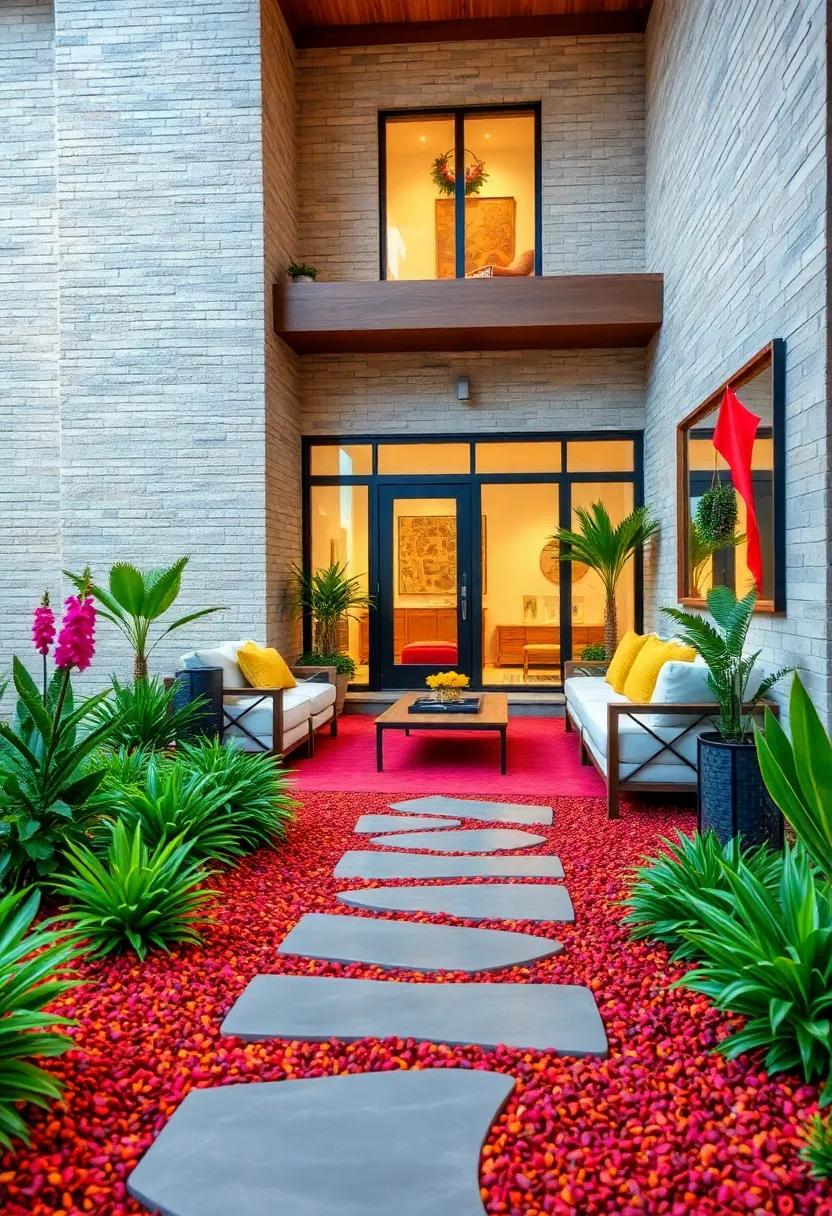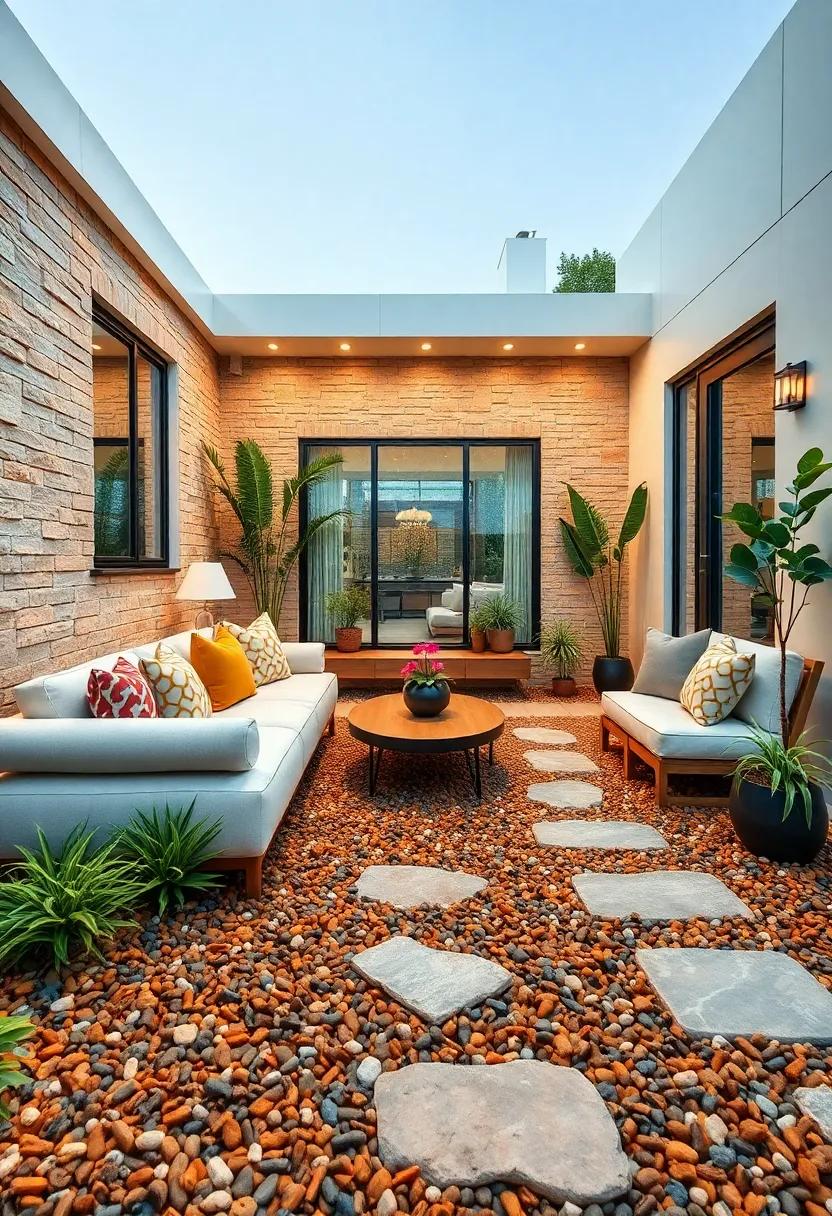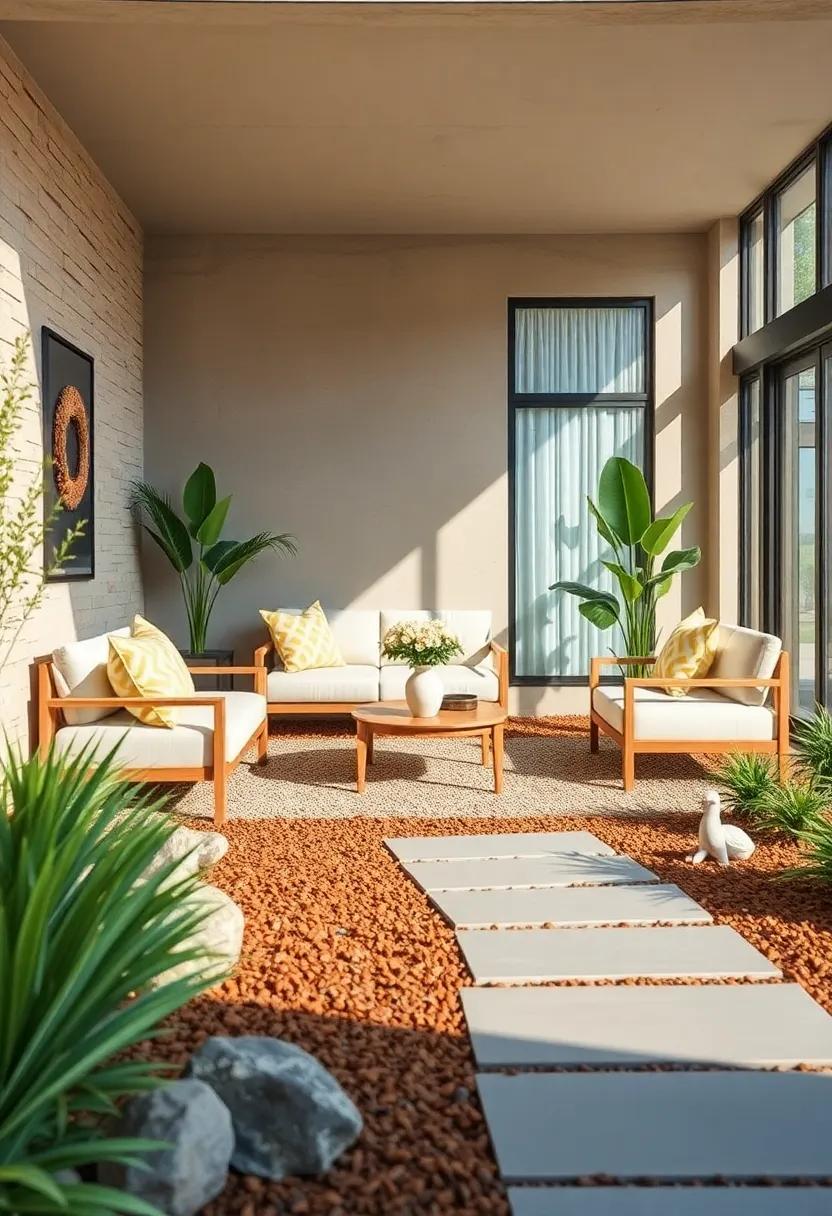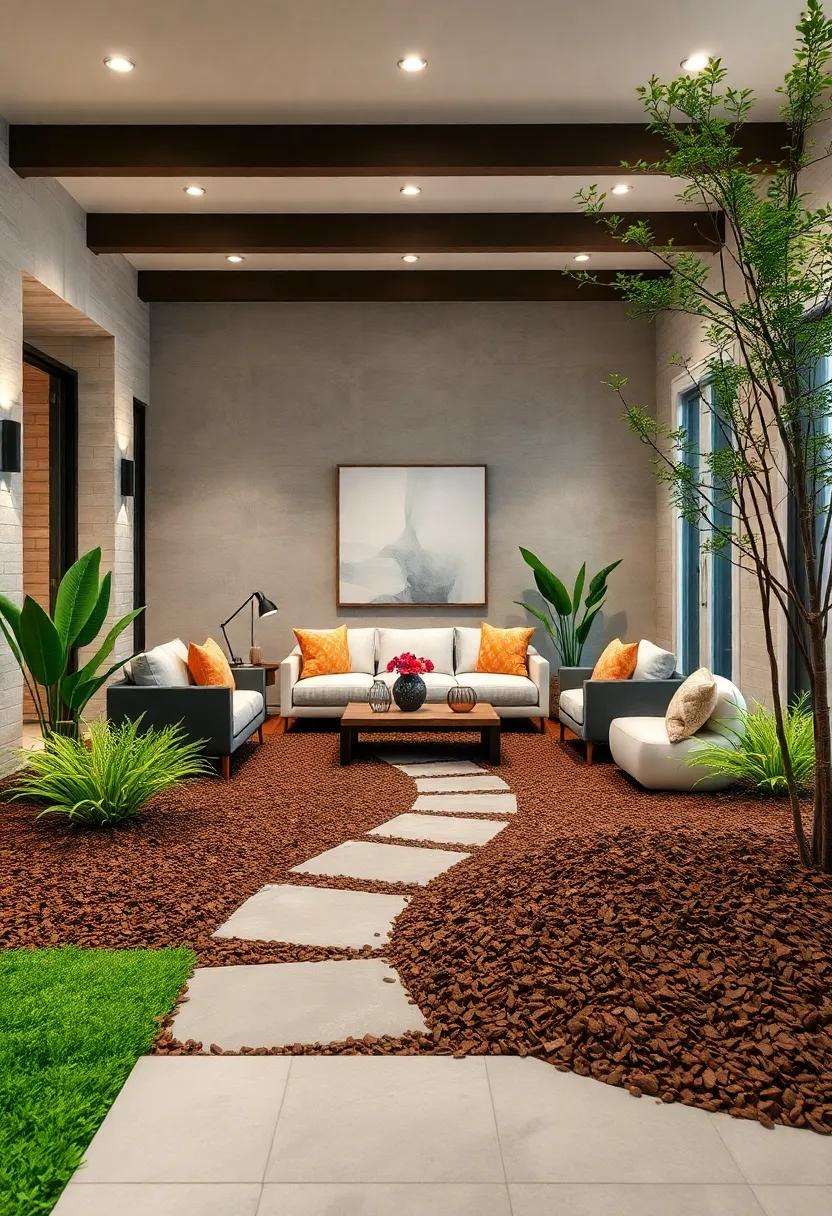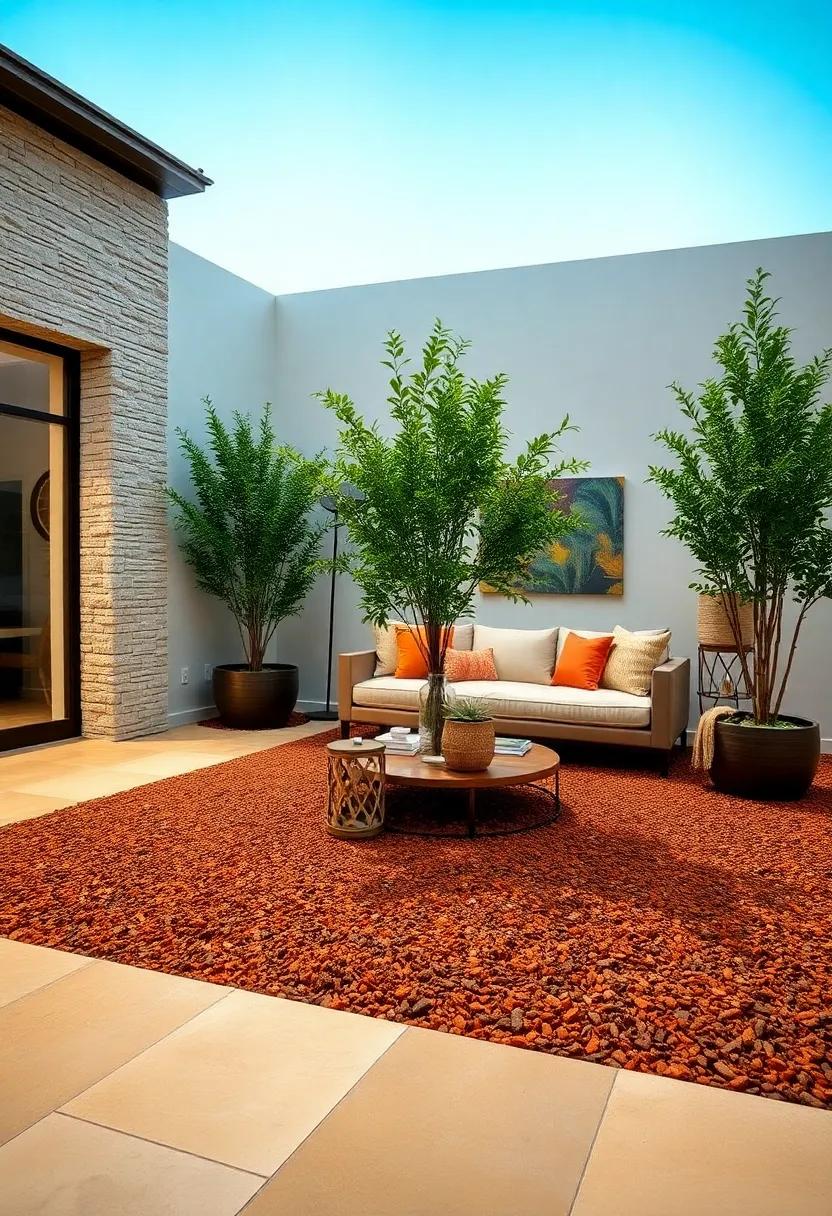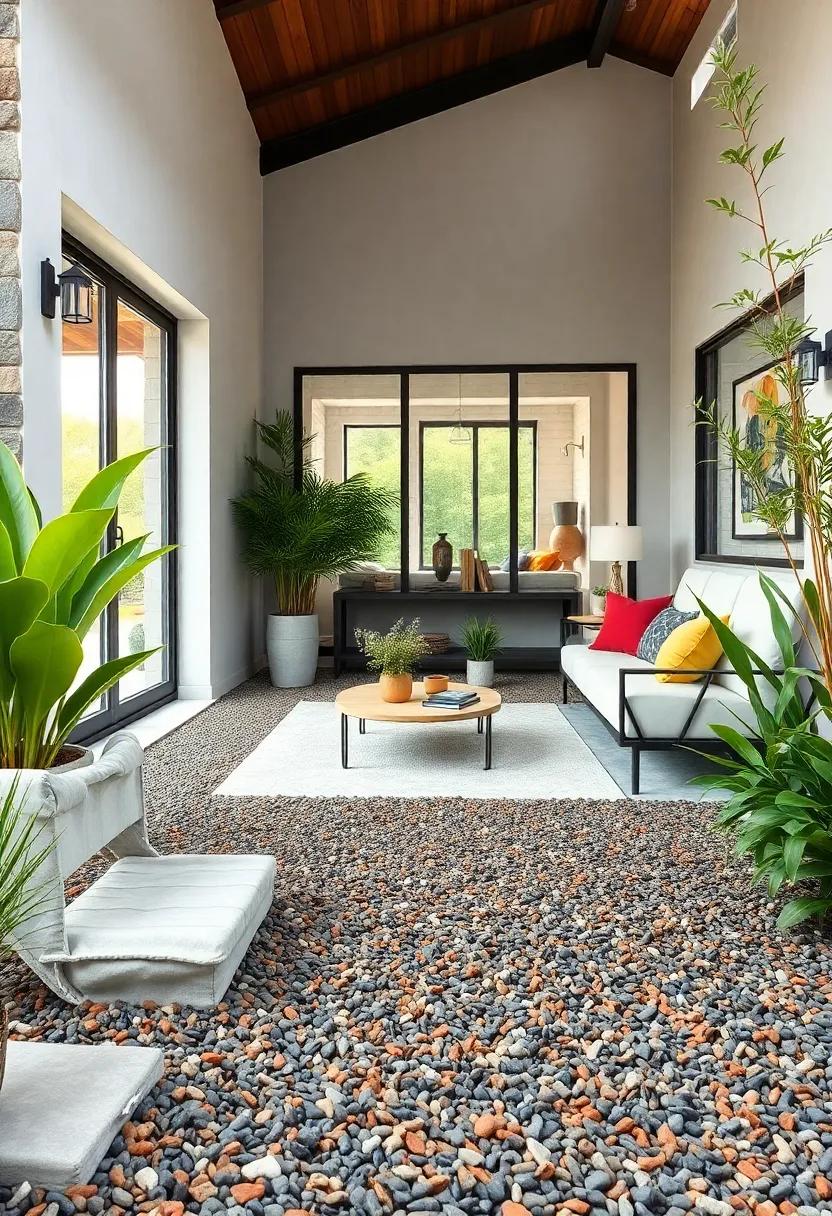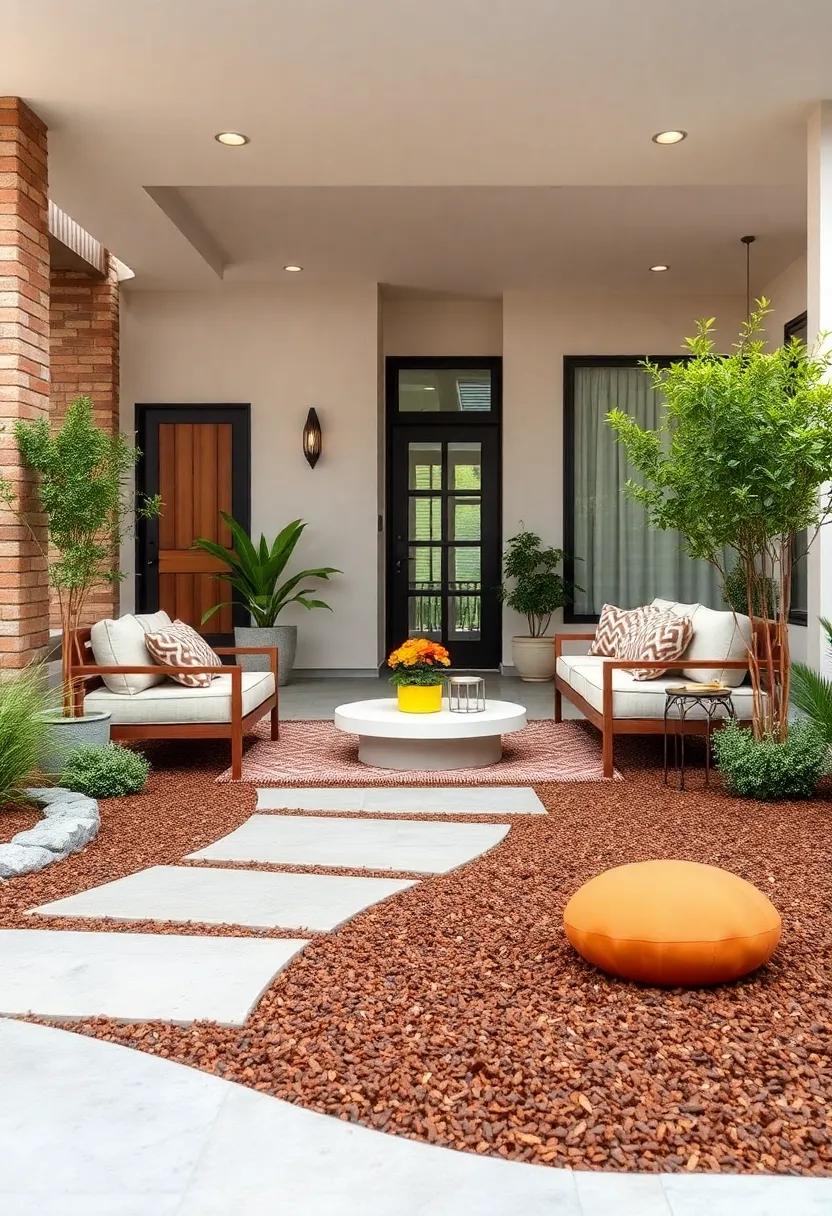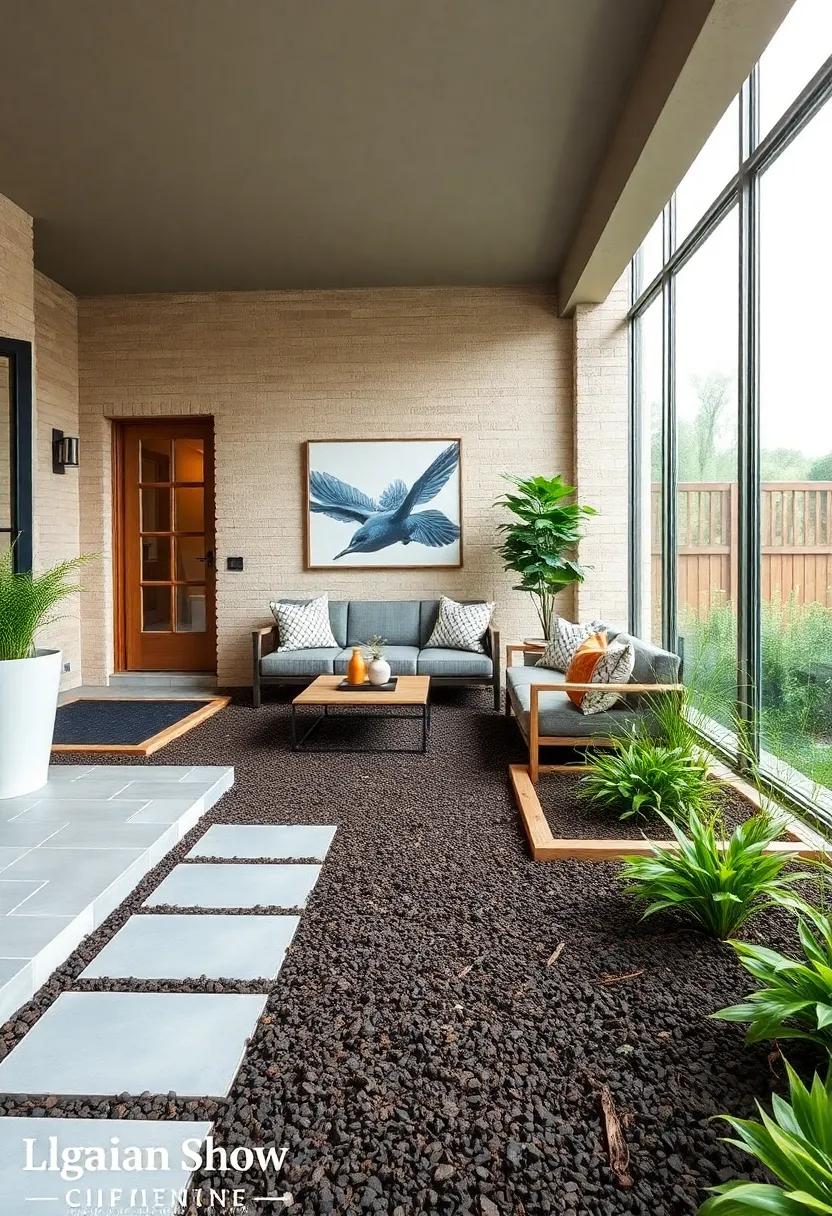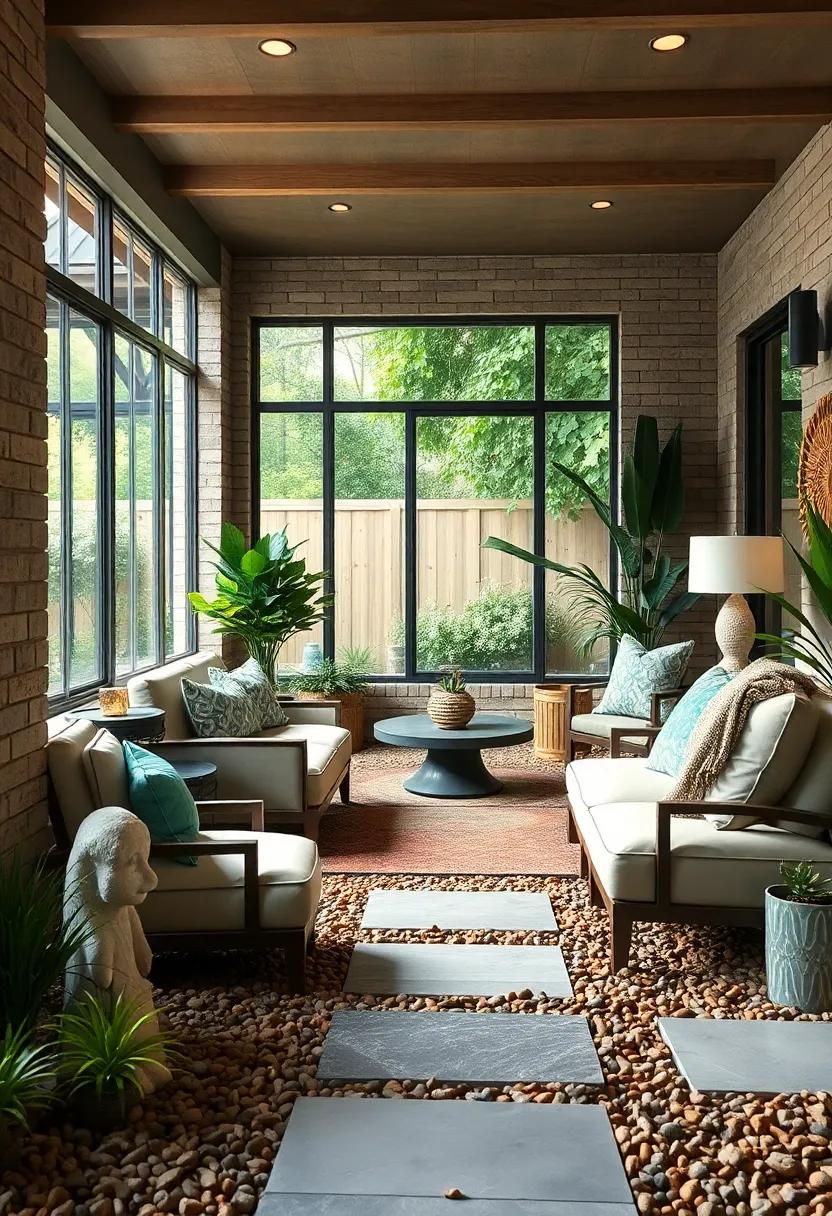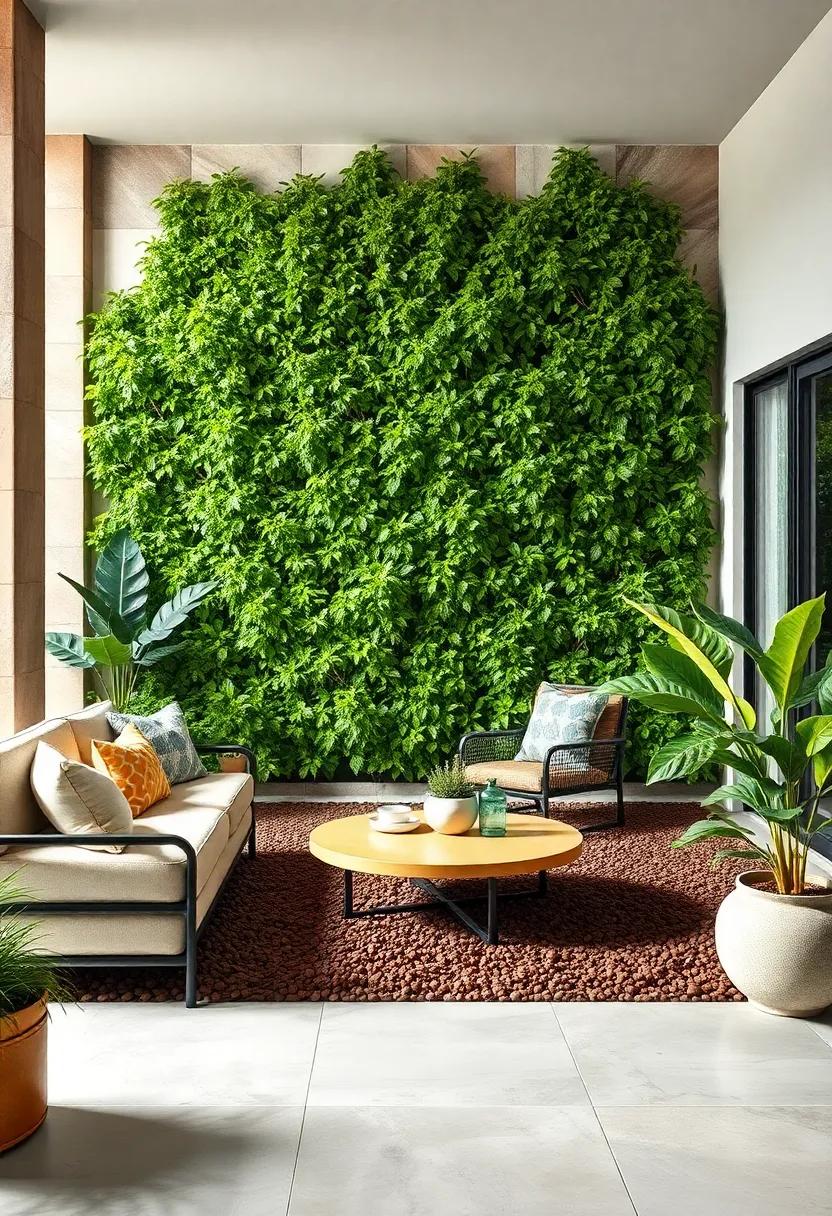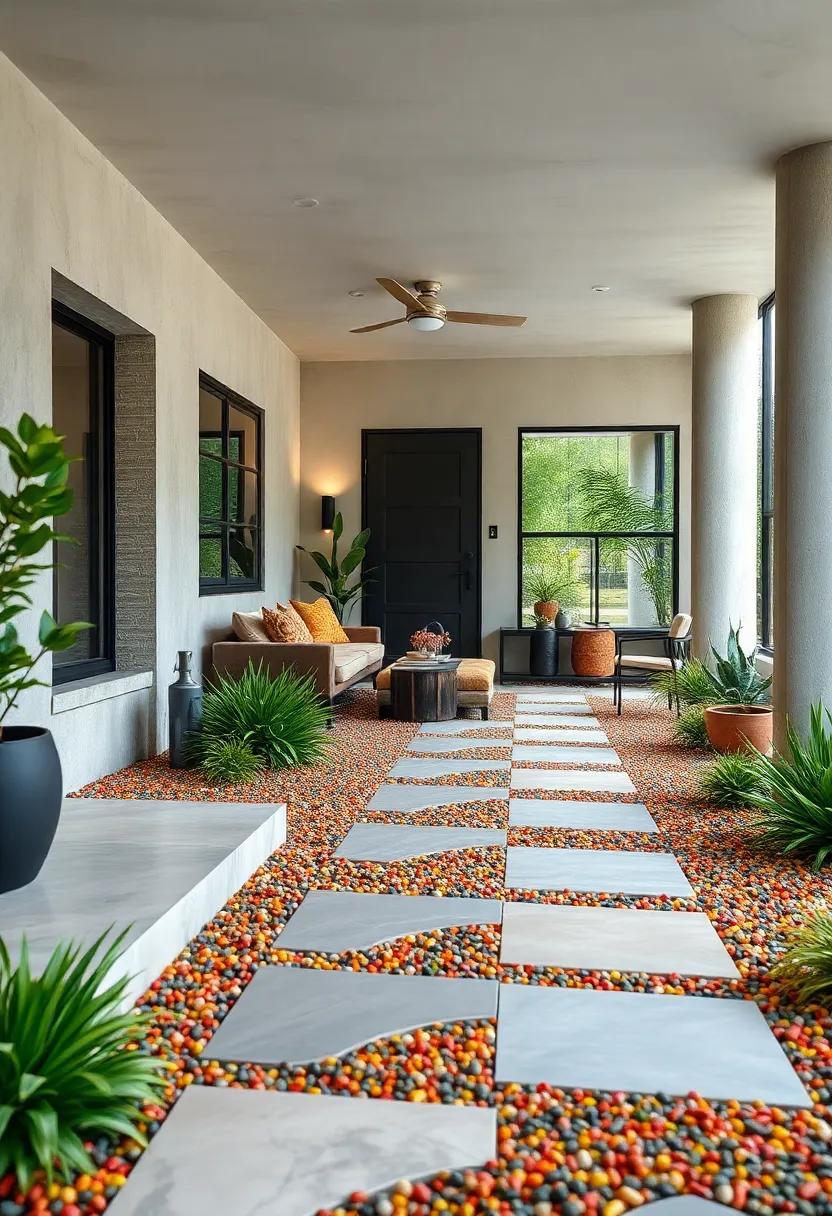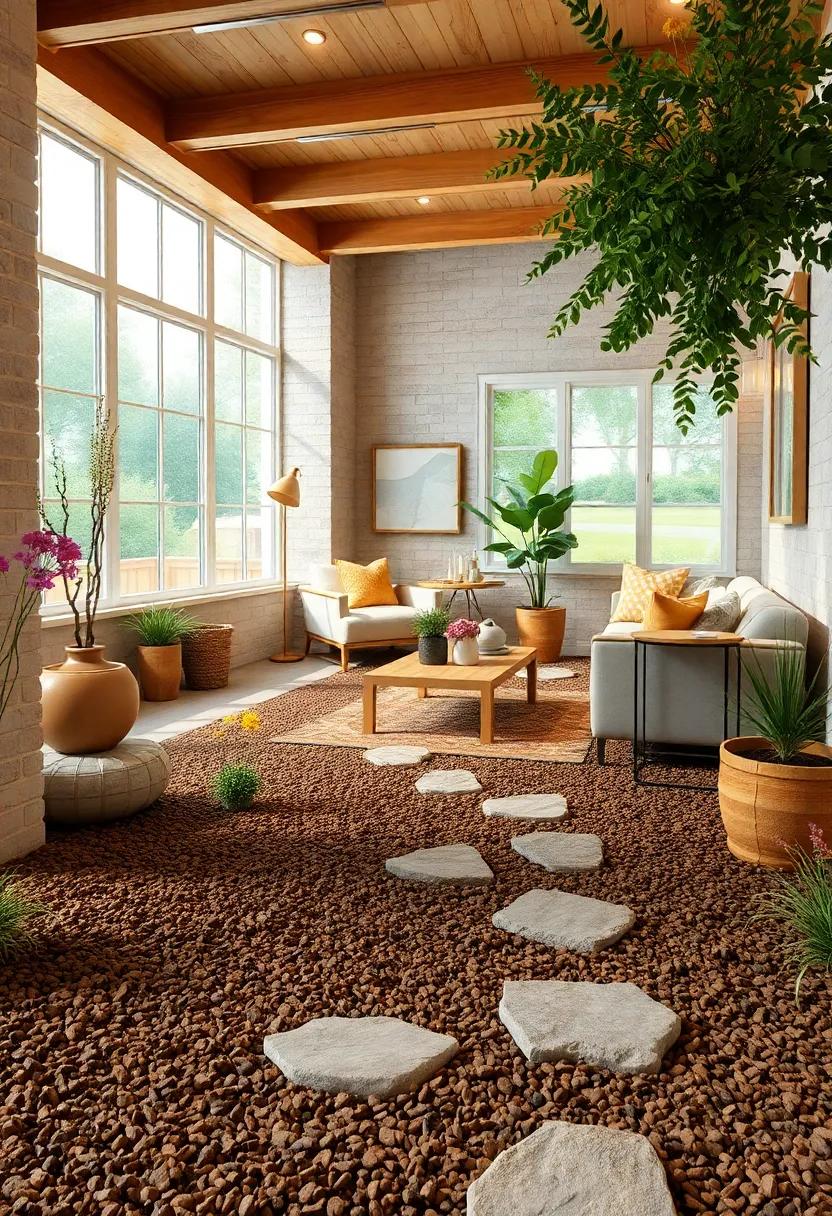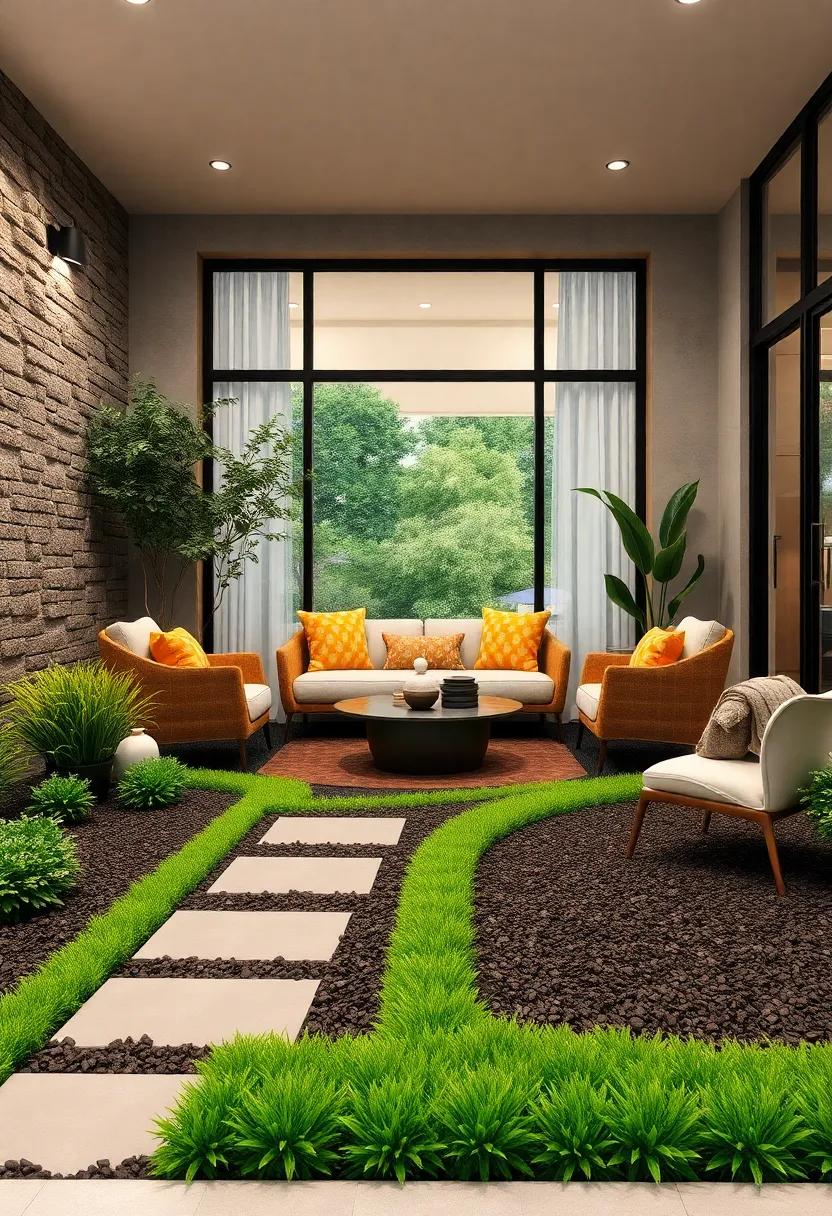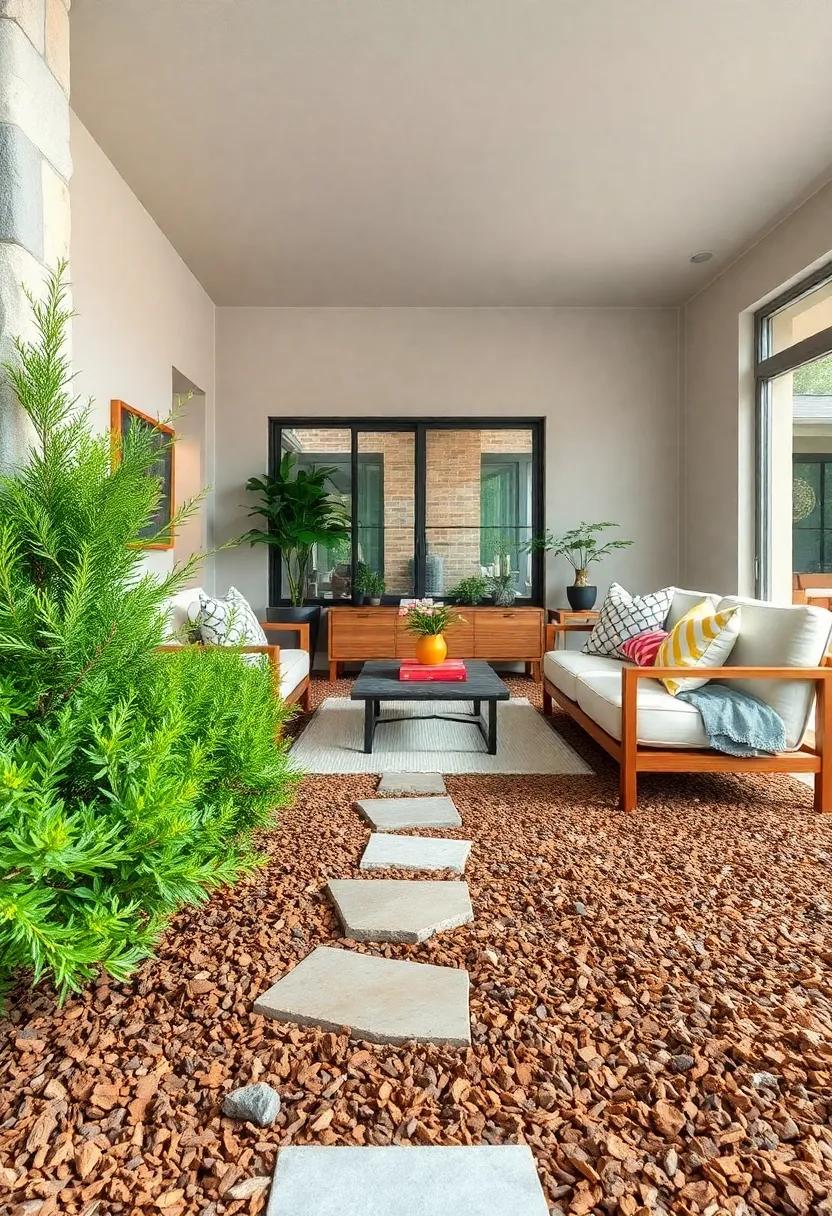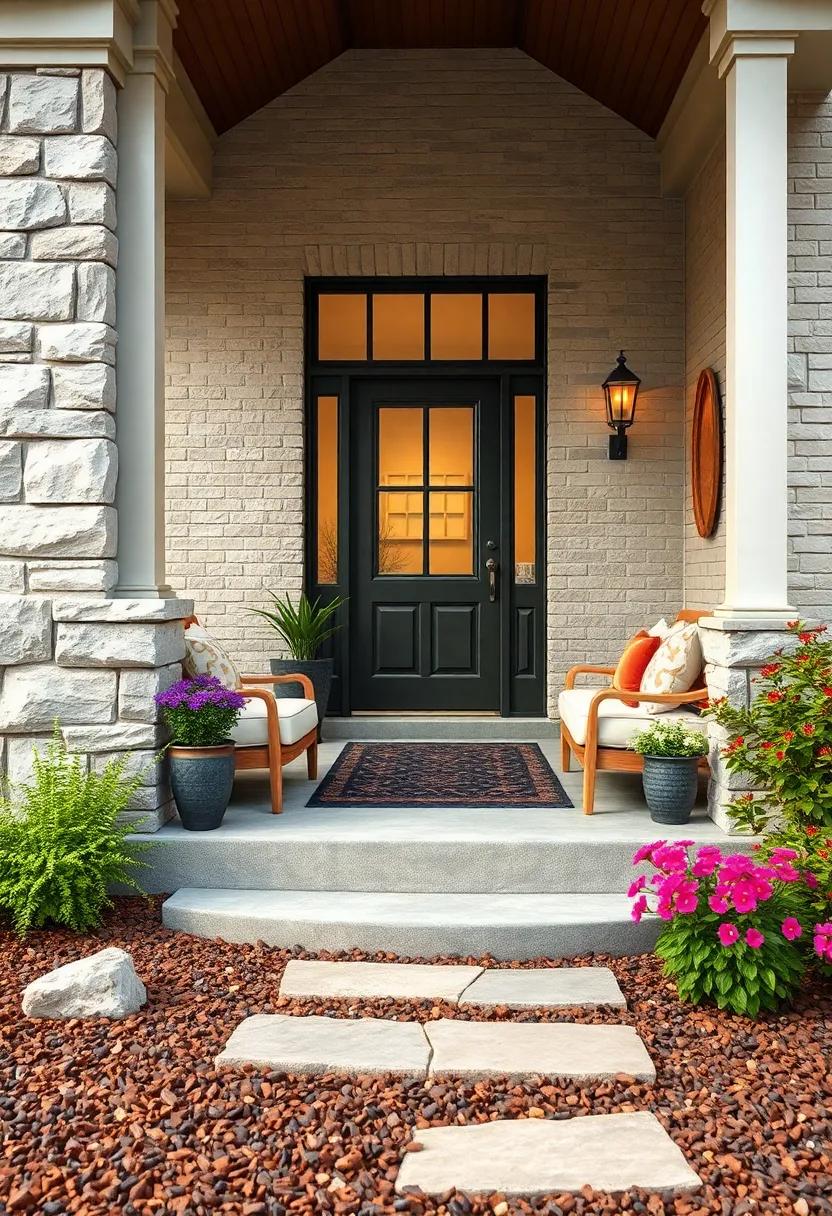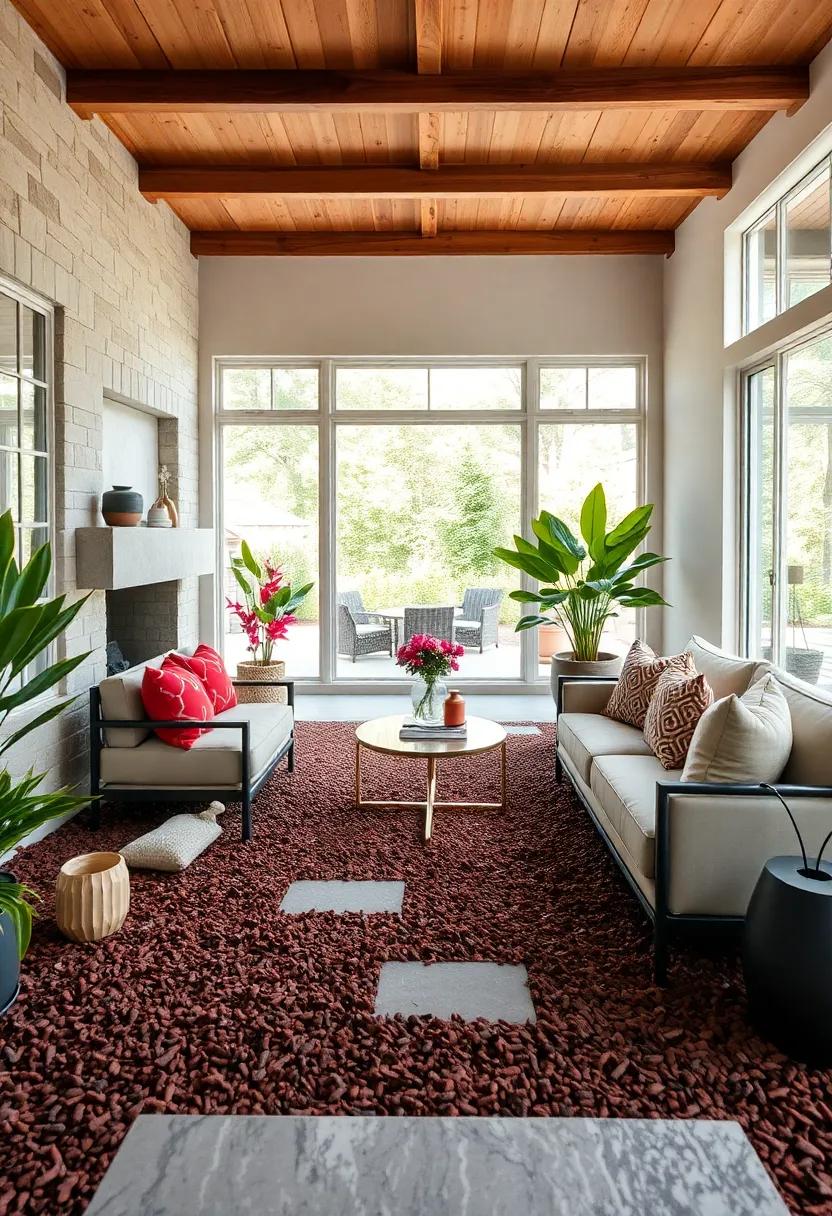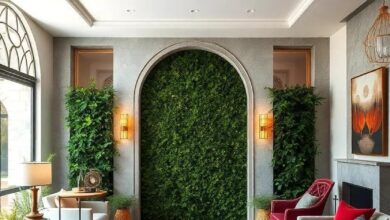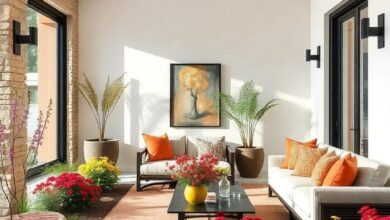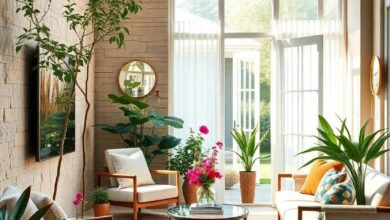Transform Your Curb Appeal: Creative DIY Front Yard Mulch Ideas to Try
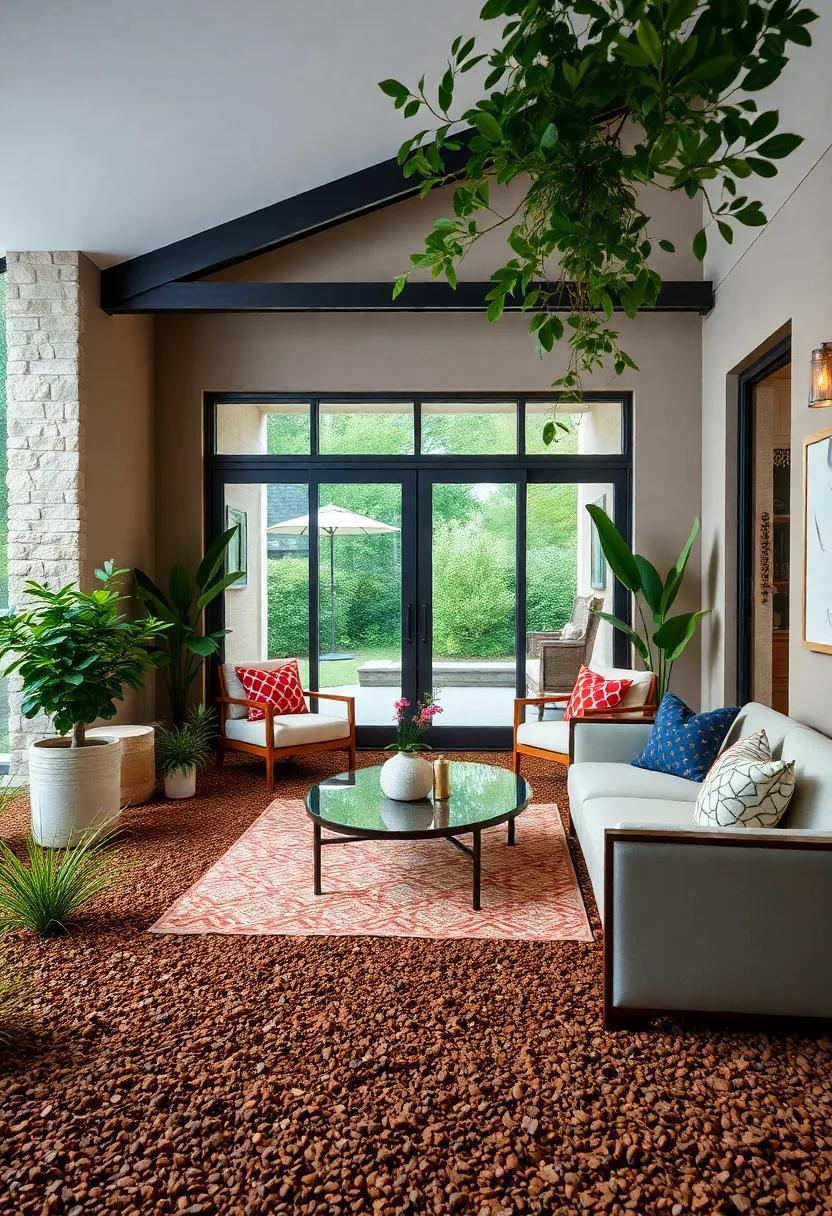
Your front yard is the first impression your home makes on visitors and passersby, and mulch is one of the simplest yet most impactful ways to elevate that curb appeal. Beyond its practical benefits-like moisture retention and weed control-mulch offers a canvas for creativity, allowing homeowners to infuse personality and style into their outdoor space. Whether you prefer classic looks or something more unexpected, this article explores a variety of inventive DIY mulch ideas that can transform your front yard from ordinary to extraordinary without breaking the bank. Get ready to uncover fresh inspiration that will help your home stand out in the neighborhood.
Elevate Your Front Yard With Vibrant Colored Mulch Patterns That Create Eye-Catching Visual Interest
Bring your front yard to life by incorporating colorful mulch patterns that do more than just protect soil-they turn your landscape into a stunning visual masterpiece. Play with contrasting colors like deep red and golden yellow to frame flower beds, or create flowing shapes that mimic natural elements such as waves or spirals. Combining different mulch shades in layered designs offers an artistic approach that captures attention and highlights your garden’s unique features.
To get started, consider these simple yet impactful pattern ideas:
- Checkerboard charm: Alternate light and dark mulch squares for a modern, graphic statement.
- Radiating rings: Use concentric circles of various colors to draw the eye toward a focal point like a tree or statue.
- Freeform swirls: Blend colors in sweeping curves to add a sense of movement and whimsy.
| Mulch Color | Effect | Best For |
|---|---|---|
| Red Cedar | Bold warmth | Flower borders |
| Black Dyed | Strong contrast | Modern designs |
| Natural Pine | Soft texture | Woodsy feel |
| Brown Hardwood | Earthy grounding | Pathways and edges |
Create Layered Mulch Beds Featuring Contrasting Plant Colors and Textures For Dynamic Curb Appeal
Layering your mulch beds with plants that showcase contrasting colors and textures is a surefire way to catch the eye and add depth to your front yard. Start by selecting a base layer of low-growing ground covers or small shrubs with dark green or variegated leaves. Above this, add mid-height perennials with bold foliage or vibrant blooms to create a stunning visual contrast. To finish, include taller grasses or spiky plants that provide vertical interest and break the monotony. This careful arrangement not only creates a dynamic flow but also enhances the natural beauty of your landscape through rich layers of varying hues and shapes.
To help you plan, consider mixing:
- Silver Dusty Miller with its soft, silvery foliage against Bright Red Salvias
- Blue Fescue Grass paired with the broad leaves of Hostas
- Purple Coneflowers set beside low-growing Lamb’s Ear for a velvety contrast
| Plant Type | Color/Texture | Height (inches) |
|---|---|---|
| Ground Cover | Dark Green / Low Profile | 6-12 |
| Mid-Height Perennials | Bright, Bold Colors | 18-24 |
| Tall Accent Plants | Spiky, Textured Foliage | 30-36 |
Use Natural Stone Borders Around Mulch To Frame Your Garden In A Clean And Polished Style
For a garden edge that exudes timeless elegance and durability, natural stone borders are an unbeatable choice. These borders not only create a sharp separation between your mulch beds and lawn but also add an organic, earthy texture that enhances your front yard’s overall aesthetic. Opt for river rocks, flagstones, or stacked slate to match your home’s architectural style while providing a lasting, low-maintenance frame. The irregular shapes and subtle color variations in natural stone contribute to a polished yet inviting look that perfectly balances clean lines with rustic charm.
When incorporating stone borders, consider layering stones in varied heights or interspersing them with small accent plants to add depth and interest along the mulch edges. Here are some styling tips to elevate your garden’s curb appeal:
- Choose stones that complement your home’s color palette for a cohesive appearance.
- Install edging deep enough to prevent mulch spillage, ensuring a pristine boundary all season long.
- Add solar pathway lights nestled between stones to create enchanting nighttime ambiance.
| Stone Type | Look & Feel | Maintenance |
|---|---|---|
| River Rock | Smooth, rounded, natural gray tones | Low – occasional washing |
| Flagstone | Flat slabs, earthy rust and brown hues | Medium – reposition as needed |
| Slate | Layered, deep charcoal and black | Low – occasional cleaning |
Design A Playful Mosaic Of Different Mulch Types For A Unique And Artistic Front Yard Look
Imagine turning your front yard into a vibrant canvas where different mulch types form an eye-catching mosaic. By mixing colors, textures, and sizes, you can create a dynamic pattern that not only protects your plants but also elevates your outdoor aesthetic. Consider using rich red cedar bark alongside bright golden pine straw or deep black rubber mulch. This combination adds depth and contrast, transforming mundane garden beds into playful, artistic statements.
To get started, sketch a rough design on paper or use garden markers to outline the shapes in your yard. Incorporate simple geometric forms such as circles, triangles, or checkerboard motifs to introduce a modern flair. Here’s a quick guide to ensure your project flows seamlessly:
- Choose contrasting colors to make each section pop and create a lively visual impact.
- Use natural barriers like stones or metal edging to keep mulch types separate and defined.
- Balance function and aesthetics by selecting mulch that supports plant health while contributing to the design.
- Maintain proper depth for each type to ensure longevity and weed suppression.
Blend Organic Bark Mulch With Fresh Flowers To Create A Warm And Inviting Entrance Scene
Incorporating organic bark mulch around your front yard not only nourishes the soil but also sets a rich, earthy foundation that enhances the overall aesthetic. When paired with fresh flowers, this natural combination can radiate warmth and charm that instantly elevates your entrance. Opt for vibrant blooms like marigolds, petunias, or pansies to create delightful pops of color against the deep brown texture of the mulch. This layered approach not only creates visual depth but also encourages biodiversity, helping your garden thrive throughout the seasons.
To maximize the impact, consider grouping flowers in clusters with varying heights and textures, allowing the mulch to act as a cohesive backdrop that unifies the space. Maintaining clearly defined edges between the mulch and walkway will add a professional and tidy appearance, inviting guests with a neat and welcoming vibe. Remember to replenish the mulch annually to keep the area looking fresh, and choose organic options to support sustainable gardening practices. Below is a simple guide to blending mulch types with compatible flowers for a dynamic front yard look:
| Mulch Type | Recommended Flowers | Visual Effect |
|---|---|---|
| Dark Brown Bark | Yellow Marigolds, Purple Petunias | Bold, Warm Contrast |
| Red Cedar | Orange Zinnias, Red Geraniums | Rich, Vibrant Warmth |
| Natural Pine Bark | White Alyssum, Blue Lobelia | Soft, Elegant Accent |
Arrange Circular Mulch Islands Around Ornamental Trees To Draw Focus And Add Depth
Creating circular mulch islands around your ornamental trees is a simple yet impactful way to enhance your front yard’s visual appeal. This technique not only directs attention to the beauty of individual trees but also introduces a sculptural element that adds depth and dimension to your landscape. The smooth, rounded borders contrast beautifully with the angular lines of sidewalks and flower beds, producing a harmonious balance between natural forms and structured spaces. Use edging materials like stone, brick, or metal to keep mulch contained and provide a polished finish that stands out against the green lawn backdrop.
To amplify the effect, consider combining different mulch colors or textures within these islands to create subtle layering. For example, a rich, dark mulch can make the tree trunk pop, while lighter shades around the perimeter can softly fade into the surrounding grass. Adding low-growing plants such as creeping thyme or ornamental grasses around the edges can also introduce a dynamic transition between mulch and lawn, while inviting pollinators to your yard. Here’s a quick guide to ideal tree and mulch pairings for the best visual impact:
| Ornamental Tree | Recommended Mulch Color | Complementary Edge Plant |
|---|---|---|
| Dogwood | Dark Brown | Creeping Thyme |
| Japanese Maple | Red Cedar | Blue Fescue |
| Flowering Cherry | Natural Hardwood | Sweet Woodruff |
Incorporate Aromatic Cedar Mulch Near Walkways To Enhance Sensory Appeal And Relaxation
Imagine stepping onto a path lined with a soft carpet of aromatic cedar mulch-each footstep releases a subtle, woodsy fragrance that calms the mind and invites you to linger longer by your front yard. This unique sensory experience doesn’t just boost the visual charm of your walkway; it also offers an intangible element of relaxation, making your entrance feel welcoming and serene. The natural oils in cedar help repel pests, adding practical benefits alongside its soothing aroma. Incorporating this fragrant mulch near walkways creates a harmonious blend of aesthetic appeal and tranquil ambiance that enhances every visit.
To maximize both the sensory and practical advantages, consider pairing aromatic cedar mulch with these complementary elements:
- Low-growing herbs like lavender or thyme, which amplify the relaxing scents while providing seasonal color.
- Natural stone edging that contrasts the warm cedar tones, defining the path’s borders elegantly.
- Soft solar pathway lights to gently illuminate the fragrant walkway during twilight, heightening the experience.
Mix Recycled Rubber Mulch With Native Plants For A Sustainable And Modern Landscape Scene
Incorporating recycled rubber mulch with native plants creates a visually striking and eco-friendly front yard that stands the test of time. Unlike traditional organic mulch, rubber mulch offers durability, excellent drainage, and long-lasting color, making it perfect for busy households or drought-prone areas. When paired with native plants, which require less water and maintenance, this combination allows you to craft a landscape that’s both modern and sustainable. The textured rubber mulch adds a contemporary edge to the natural, vibrant greens and seasonal blooms of your chosen flora, elevating curb appeal while minimizing environmental impact.
To get started, consider integrating plants such as Echinacea, Lavender, or Black-eyed Susan for low-maintenance, colorful accents that thrive locally. Lay down a thick layer of recycled rubber mulch around your perennials and shrubs to suppress weeds effectively and retain soil moisture without the usual quick decomposition of organic alternatives. Here’s a simple guide to blending these materials:
- Prepare the soil: Loosen it and amend with compost if necessary to boost plant health.
- Plant native species: Group compatible plants for easy care and harmonious design.
- Apply recycled rubber mulch: Spread a 2-3 inch layer, ensuring roots have space to breathe.
- Maintain selectively: Top up mulch annually and prune plants as needed for fresh growth.
Craft Soft Curves With Mulch Beds To Soften Angular Driveway Lines And Add Flow
Introducing soft, sweeping curves with mulch beds can dramatically transform the harsh, rigid lines often found along driveways. This simple design tweak creates a natural, organic flow that guides the eye and invites you into the landscape. Utilizing mulch in rounded beds not only adds texture and color contrast but also helps to highlight the greenery, offering a seamless transition between hardscape and garden elements.
To achieve this look, consider incorporating a mix of these features in your curved mulch beds:
- Low-growing shrubs that follow the curve gently, maintaining visual balance.
- Perennial flowers to add seasonal pops of color without overwhelming the design.
- Decorative edging that defines the shape clearly while keeping mulch containment tidy.
Integrate Mulch With Raised Garden Beds For A Structured But Cozy Front Yard Feel
Creating a harmonious balance between structure and warmth in your front yard can be easily achieved by combining raised garden beds with thoughtfully placed mulch. Raised beds introduce a clean, defined framework that guides the eye and organizes your plants, while mulch adds a textured softness that invites comfort. Using natural-colored mulch, such as cedar or pine bark, complements the wooden or stone materials typically used for raised beds, enhancing the overall cohesiveness. This blend not only highlights your garden’s design but also serves practical purposes like moisture retention and weed suppression, ensuring your yard remains pristine with minimal upkeep.
To amplify the cozy vibe, consider layering styles of mulch around different plants within the raised beds. For example, use dark cocoa mulch around flowering shrubs to make their colors pop, while lighter straw mulch under small evergreen bushes promotes a fresh, vibrant feel. Incorporating these contrasts invites visual interest and depth. Here’s a quick guide to pairing mulch types with common plants for optimal effect:
| Plant Type | Recommended Mulch | Visual Effect |
|---|---|---|
| Perennials | Dark cocoa mulch | Enhances vibrant blooms |
| Evergreens | Straw mulch | Brightens foliage |
| Herbs | Compost mulch | Encourages growth |
| Succulents | Gravel mulch | Accentuates textures |
Surround Garden Statues With Textured Mulch Layers To Highlight Unique Yard Features
Nestling garden statues amid layered mulch not only anchors these artistic accents but also amplifies their visual impact by adding depth and dimension. Opt for mulch types with varying textures-such as shredded bark, pine needles, or cocoa hulls-to create a rich tapestry beneath your statue that invites closer inspection. This textural contrast draws the eye and naturally frames your focal point, making it stand out even in a lush, busy landscape. The interplay of light and shadow on uneven mulch surfaces also enhances the sculptural lines and contours of your garden pieces.
To maximize the effect, consider mixing mulch colors that complement the statue’s material and color palette. For example,
dark, rich mulches like black diamond or volcanic rock can make white stone statues pop, while lighter, natural hues emphasize earthy bronze or rust finishes. Incorporate a simple layering system as shown below to achieve a balanced, elegant base:
| Layer | Mulch Type | Purpose |
|---|---|---|
| Bottom | Coarse Wood Chips | Drainage & Longevity |
| Middle | Shredded Bark | Texture & Volume |
| Top | Fine Pine Needles or Colored Mulch | Highlight & Contrast |
- Clear the area thoroughly before laying mulch for clean lines.
- Use edging materials to keep mulch contained and neat.
- Replenish top layers seasonally to maintain vibrancy and texture.
Build A Vertical Garden Backdrop Accented With Mulch Ground Cover For Contrast And Color
Elevate your front yard’s aesthetic by incorporating a vertical garden backdrop that serves as a stunning canvas for vibrant greenery. Use wooden pallets, trellises, or sturdy frames as your foundation, allowing climbing plants like ivy, ferns, or colorful annuals to weave their way upward. This not only adds dimension but creates a lush, eye-catching focal point. Surround the base of your vertical garden with a carefully selected mulch ground cover to enhance texture and introduce a bold splash of contrast. Richly colored mulches-such as dark cocoa or bright red-offer a captivating counterbalance to the greenery, reinforcing your garden’s layered appeal.
To maintain harmony and visual interest, consider these mulch and plant combinations:
- Natural Cedar Mulch paired with trailing silver-leaf plants for a rustic, soft vibe
- Red Dyed Mulch accented by spiky agave or succulents to create energetic pops of color
- Black Rubber Mulch for a modern look complemented by vibrant flowering vines
| Mulch Type | Ideal Plant Pairing | Visual Effect |
|---|---|---|
| Cocoa | English ivy | Warm, earthy |
| Red | Daylilies | Bold, lively |
| Black | Begonias | Striking contrast |
Scatter Colored Mulch In Geometric Shapes Along The Pathway For A Contemporary Vibe
Inject a burst of modern artistry into your front yard by using colorful mulch scattered in bold geometric patterns along your pathway. This technique transforms a simple walkway into a visual journey, enticing guests to explore and admire your innovative landscape design. Contrasting hues like charcoal with ruby red or vibrant gold with deep purple not only create striking visual interest but also complement contemporary architectural styles, providing a sense of rhythm and precision.
To achieve this look, consider the following tips:
- Use painter’s tape or string to outline sharp, clean edges for shapes like triangles, diamonds, or hexagons to ensure symmetry.
- Select mulch in a variety of shades to build depth and highlight the geometry, avoiding overly similar tones for maximum impact.
- Combine this colored mulch approach with low-profile pathway lighting to enhance textures and colors at night.
| Shape | Color Pairing | Visual Effect |
|---|---|---|
| Hexagons | Teal & Mustard | Modern & Inviting |
| Triangles | Charcoal & Bright Red | Bold & Dynamic |
| Diamonds | Lavender & Slate Gray | Soft Yet Structured |
Combine Mulch With Succulent Arrangements To Showcase Desert-Inspired Front Yard Beauty
Enhance your front yard’s natural charm by pairing rich, earthy mulch with a vibrant assortment of succulents. This blend not only underscores a desert-inspired aesthetic but also provides a practical, drought-resistant landscape solution perfect for warmer climates. Opt for light-colored or red lava rock mulch to imitate the warm tones of a desert floor, creating a stunning contrast against the fleshy greens and blues of aloe, echeveria, and agave varieties. These materials work harmoniously to retain soil moisture, suppress weeds, and highlight the architectural beauty of your succulent arrangements, making every corner of your yard a statement piece.
For added visual interest, consider grouping succulents in varied heights and textures, then use mulch to unify these elements under a cohesive earthy theme. Play with different mulch depths to emphasize certain plants or to contour your beds elegantly. Here’s a simple cheat sheet for mulch and succulent pairings to guide your creative process:
| Mulch Type | Succulent Variety | Effect |
|---|---|---|
| Red Lava Rock | Aloe & Agave | Bold, rugged contrast |
| Tan Pine Bark | Sempervivum & Sedum | Soft, natural warmth |
| Crushed Granite | Echeveria & Crassula | Modern, textural backdrop |
- Tip: Apply mulch around succulents sparingly to prevent moisture retention against the plant base, which can cause rot.
- Creative touch: Embed small desert stones alongside your mulch to enhance the natural desert vibe and add subtle sparkle under sunlight.
Design A Cottage Garden Scene Featuring Rustic Mulch Trails And Wildflowers Blooming
Imagine winding rustic mulch trails weaving through a charming cottage garden, inviting visitors to explore the tapestry of wildflowers that burst with color on either side. The natural texture of the mulch contrasts beautifully with the softness of blooming blossoms, creating a harmonious balance between structure and wilderness. Choosing organic, bark-based mulch enhances the earthiness of the path while providing excellent moisture retention for the delicate plants. This combination encourages a seamless flow that feels both thoughtfully planned and delightfully untamed.
Incorporate a variety of wildflowers, such as lavender, black-eyed susans, daisies, and foxgloves, to add layers of height, color, and seasonal interest. Group flowers in clusters along the edges of your trails to create pockets of visual delight that catch the eye as you stroll. Complement these blooms with subtle garden accents – think weathered wooden signs or vintage ceramic pots – to enhance the cottage vibe. For an added touch of texture and charm, scatter smooth river rocks or reclaimed bricks alongside the mulch paths, guiding footsteps gently while maintaining a rustic appeal.
Use Dark Mulch To Set Off Bright Green Lawn Borders Providing Striking Visual Definition
Dark mulch serves as an exceptional backdrop that magnifies the vibrancy of lush green lawn borders. When strategically placed around pathways, flower beds, or along the edges of your yard, it creates a bold contrast, instantly elevating your front yard’s aesthetic appeal. This visual strategy not only highlights the neatness of your lawn’s edges but also draws the eye, transforming a simple garden edge into a striking feature. The deep hues of cocoa, black, or dark brown mulch provide depth and texture, making bright greens pop with a fresh, vibrant energy that bright mulch simply can’t achieve.
To maximize impact, consider incorporating these key tips:
- Choose mulch varieties with rich, uniform coloring to maintain consistency season after season.
- Refresh mulch layers annually to keep the dark color vibrant and the soil nourished.
- Pair dark mulch with border plants that have lighter foliage or colorful blooms for extra dimension.
Here’s a quick guide for choosing mulch types and their complementary lawn colors:
| Mulch Color | Ideal Lawn Border Shade | Visual Effect |
|---|---|---|
| Black | Bright Green | High Contrast, Modern |
| Dark Brown | Chartreuse or Yellow-Green | Warm, Earthy |
| Cocoa | Emerald Green | Natural, Rich |
Scatter Crushed Pine Bark Around Shrubs To Create A Naturalistic Forest Edge Appearance
Enhance the natural charm of your garden by scattering crushed pine bark around shrubs, crafting a forest edge that invites tranquility and rustic beauty. This organic mulch not only complements greenery with its rich, earthy tones but also offers practical benefits such as moisture retention and weed suppression. Its irregular texture contrasts beautifully with vibrant foliage, creating a seamless transition from cultivated beds to the wild underbrush, evoking the serenity of a woodland setting right at your doorstep.
Key Advantages of Using Crushed Pine Bark:
- Long-lasting and decomposes slowly, reducing frequent replacement
- Enhances soil quality by gradually adding organic matter
- Provides excellent insulation for root systems against temperature fluctuations
- Offers an aesthetically pleasing, natural mulch look without artificial elements
Frame Your Porch Steps With Thick Mulch And Low-Height Blooming Perennials For Warm Welcome
Enhancing the entrance to your home can be as simple as applying a thick layer of mulch along your porch steps. This rich, earthy bed not only creates a neat, cohesive look but also helps retain soil moisture and suppress weeds, making maintenance effortless. Alongside the mulched area, consider planting low-height blooming perennials such as creeping phlox, lavender, or dwarf coneflowers which flourish close to the ground, adding vibrant pops of color without overpowering the space. Their gentle blooms create a soft, inviting aura that warmly greets visitors and elevates the overall curb appeal.
For added charm and structure, use mulch to neatly curve around fixtures like railings or lamp posts, forming natural borders that frame each plant cluster. Planting perennials with staggered blooming schedules ensures your porch remains lively and dynamic through different seasons. Below is a simple guide to some ideal perennials perfect for this setup:
| Perennial | Bloom Color | Height | Bloom Season |
|---|---|---|---|
| Creeping Phlox | Pink, Purple | 4-6 inches | Spring |
| Lavender | Purple | 12-18 inches | Summer |
| Dwarf Coneflower | Pink, White | 12 inches | Summer to Fall |
Pile Mulch In Sculptural Mounds For A Modern Abstract Front Yard Garden Composition
Take your front yard landscaping to an avant-garde level by arranging mulch into bold, sculptural mounds. This technique breaks away from traditional flat mulch beds, creating dynamic shapes that catch the eye and introduce a modern abstract element to your garden. Think of these mounded forms as living brushstrokes that add both texture and depth beneath your plants, establishing a playful contrast with sleek walkways or angular architectural features of your home.
When crafting these mulch mounds, consider layering different mulch types or colors to enhance the sculptural effect. Use clean edges and tools like shovels or trowels to carve precise contours, turning simple piles into curated garden art. The key benefits include:
- Distinct visual interest: Elevates your front yard’s design beyond typical landscaping.
- Soil protection: Maintains moisture while reducing erosion on sloping mounds.
- Low maintenance: Requires occasional reshaping to retain crisp forms.
Spread Mulch Under Flowering Trees To Boost Root Health While Adding Colorful Ground Texture
Blanketing the soil beneath flowering trees with mulch works wonders beyond mere aesthetics. This simple landscaping trick safeguards tree roots from temperature extremes, conserves moisture, and suppresses pesky weeds vying for nutrients. For a vibrant touch, opt for colorful mulch varieties like dyed hardwood or naturally rich cocoa mulch, turning the ground beneath your trees into a living work of art that evolves with the seasons.
Consider layering mulch in a 3 to 4-inch depth to ensure ideal soil insulation and aeration, but be cautious to keep it several inches away from the tree trunk to prevent rot. For seasonal interest, mix in organic materials like shredded pine bark or composted leaves that enrich soil health over time. Below is a quick guide to mulch options perfect for flowering tree bases:
| Mulch Type | Color | Benefits |
|---|---|---|
| Dyed Hardwood | Red, Brown, Black | Long-lasting color, natural look |
| Cocoa Mulch | Chocolate Brown | Organic nutrients, pleasant aroma |
| Shredded Pine Bark | Rustic Brown | Excellent moisture retention, pH neutral |
| Composted Leaves | Earthy Brown | Nutrient-rich, improves soil texture |
- Tip: Refresh mulch annually to maintain a bright, inviting appearance and keep roots thriving.
- Bonus: Mulch also invites beneficial soil microbes that work in synergy with tree roots.
In Retrospect
As you embark on your front yard makeover, remember that mulch is more than just a practical ground cover-it’s a canvas for creativity and a foundation for curb appeal. Whether you choose bold colors, unique patterns, or unexpected materials, these DIY mulch ideas offer endless possibilities to personalize your outdoor space. So grab your gloves, gather your materials, and let your imagination shape a front yard that welcomes every visitor with style and charm. Your home’s first impression is about to get a fresh, vibrant boost-one mulch makeover at a time.

